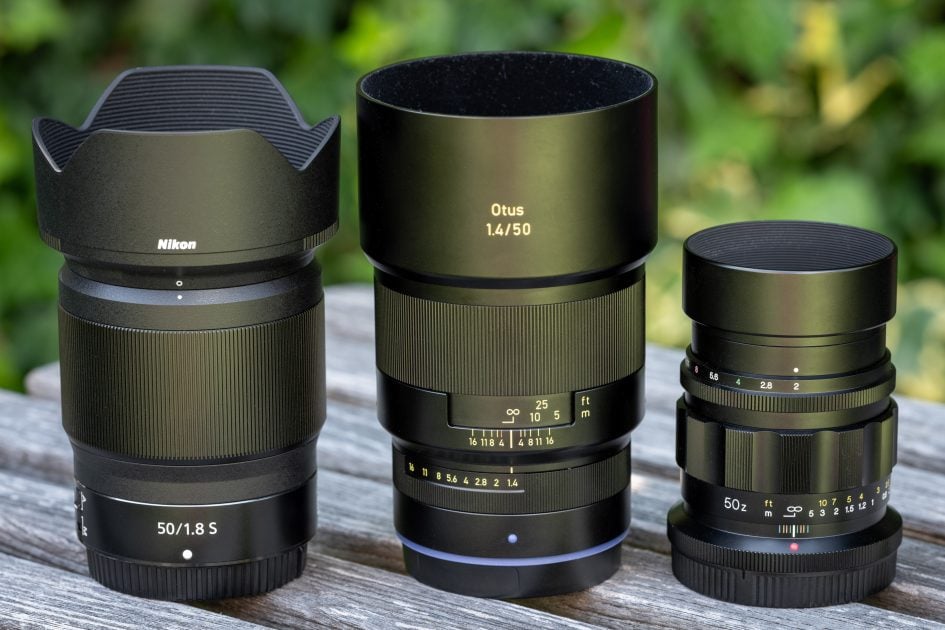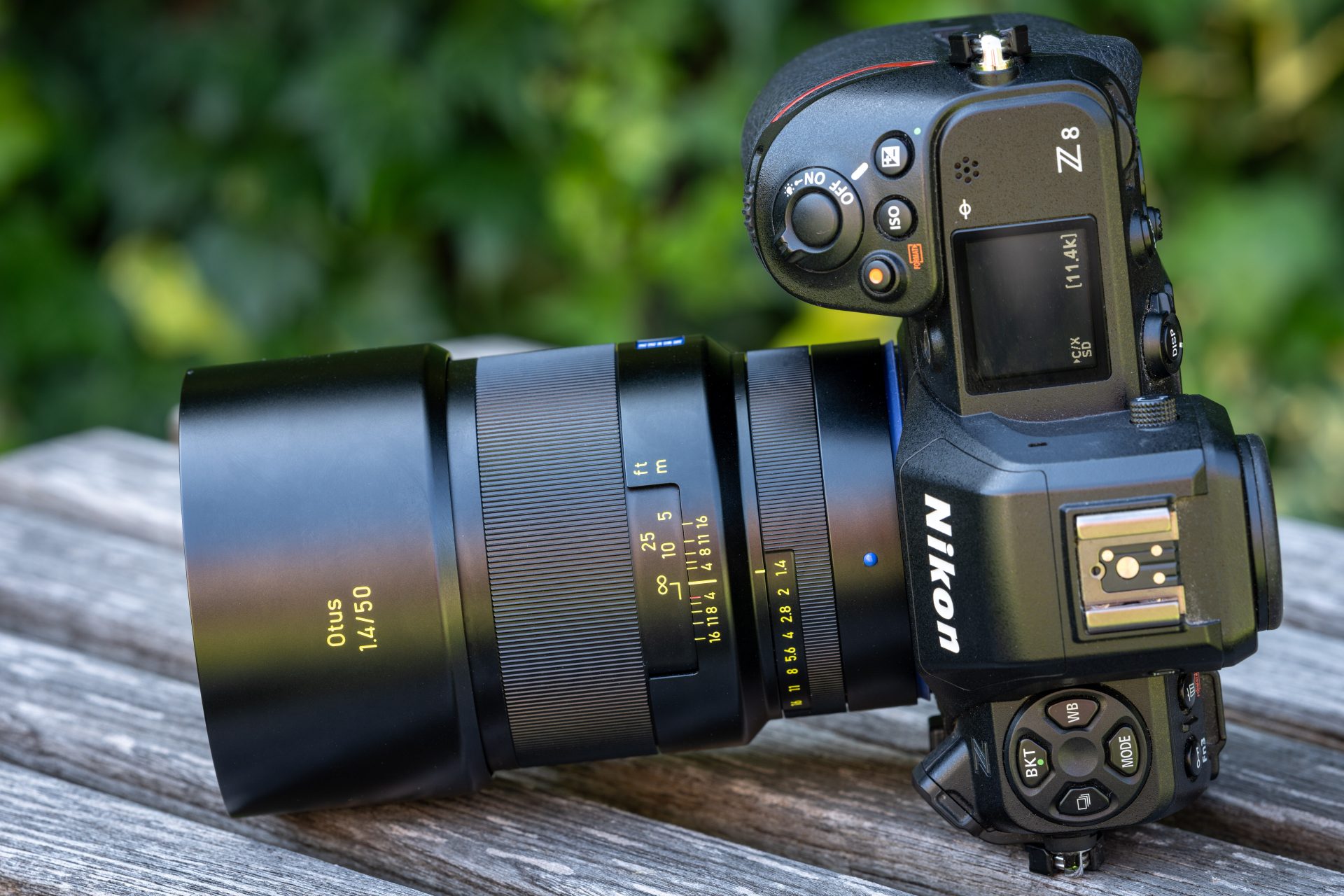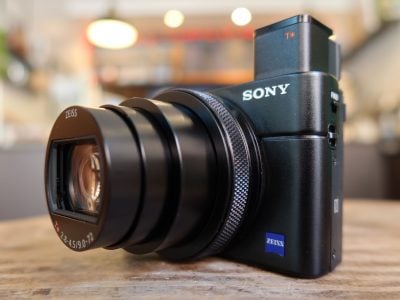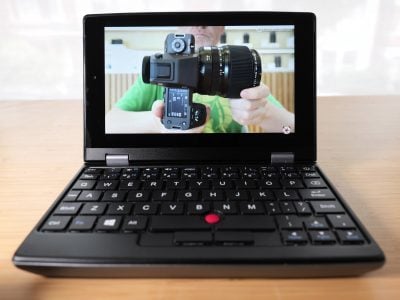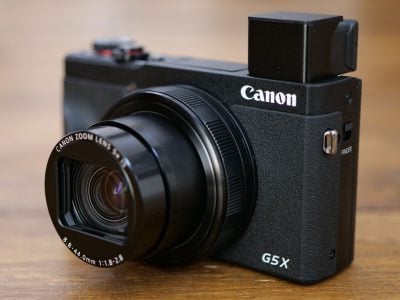Zeiss Otus ML 50mm f1.4 review
-
-
Written by Thomas
Verdict
The Zeiss Otus ML 50mm f1.4 is the completely revamped successor for mirrorless cameras to their iconic Otus 55mm f1.4 for DSLRs. Zeiss retained the robust full metal build and some of the typical “Otus-look” but managed to make the new lens considerably smaller and 22% lighter – even before taking the FTZ adapter into account which you’d need to operate the older Otus 55mm f1.4 on a mirrorless Nikon Z camera body. They also added full weather-sealing, made the aperture ring de-clickable, and reduced the price. There is also a nice padded pouch included (hear, hear, Nikon!). I also like that Zeiss retained the very long throw of 260 degrees for the focus ring which is a boon for precise manual focusing. Optically the new Otus ML 50mm f1.4 is sharp after a bit of stopping down, good enough for 180MP resolution from f2.8 onwards. It also performed surprisingly well in close-up shooting. The lens has very little field-curvature and coma. Flare, ghosting, and veiling glare are also well controlled so you can confidently shoot under adverse contra-light conditions. Plus the lens has nice Bokeh and works with eye-detection on compatible bodies.
What’s not to like? Well, the biggest drawback of the lens is that it’s manual focus only. Even with all the little helpers in todays mirrorless cameras (like focus indicator or zooming) manual focusing requires specific skills – or a tripod and a static subject. Optically, the lens is a little soft in the middle when wide-open at f1.4, a disappointment considering the performance of the DSLR originals not to mention modern rivals, although I almost expected this from the MTF-charts. Some may find this beneficial for portraiture but I would rather have traded softer corners for sharper and more contrasty center performance. Some smaller issues regard color aberrations and purple fringing which could be better controlled, and videographers may find focus-breathing a bit on the high side. I also wish the click stops of the aperture ring would be more pronounced, and de-clicking the aperture ring could be done with a switch on the lens barrel. A rubberized focus ring would also give a better grip than the metal one. And one final drawback: The integrated lens profile only corrects lateral CAs. For compensating vignette and distortions you need to activate Adobe’s lens profile. That’s not a problem when shooting RAW but JPGs and videos straight out of camera are not corrected. This leads to very heavy vignetting when shooting at f1.4.
Let’s put this into perspective and have a closer look at how the Zeiss Otus ML 50mm f1.4 compares to some alternative 50mm lenses for Z-mount.
Three 50mm lenses with Z-mount
Above: Nikon Z 50mm f1.8 S, Zeiss Otus ML 50mm f1.4, Voigtländer 50mm f2 APO-Lanthar
Compared to Zeiss Otus 55mm f1.4
The first Otus lens from Zeiss is still ahead of the new Otus ML 50mm f1.4 regarding optical performance – with the exception of background Bokeh where the new lens is a bit softer. But when you want to use the old DSLR lens on a modern mirrorless Nikon Z body you need an FTZ-adapter which makes the combo grotesquely larger and heavier than the new Otus ML 50mm f1.4. You’d also miss out on full weather-sealing and pay around 50% more (depending on the country). If you need the large focal ratio I’d rather consider getting the Nikon Z 50mm f1.2 S or if f1.8 is bright enough have a look at the Nikon Z 50mm f1.8 S (see below).
For more details see my Zeiss Otus 55mm f1.4 review where the lens came Highly Recommended.
Compared to Nikon Z 50mm f1.4
The Nikon Z 50mm f1.4 is 75% cheaper, much smaller, and 43% lighter than the Zeiss Otus ML 50mm f1.4. It offers autofocus, an electronically operated aperture, and its integrated lens profile also corrects JPGs and videos straight out of camera. Optically the Z 50mm f1.4 looks good once stopped down a bit but it does not reach the same resolution and contrast nor the quality of Bokeh of the Otus ML.
For more details see my Nikon Z 50mm f1.4 review where the lens came Recommended based on its good price/performance ratio.
Compared to Nikon Z 50mm f1.8 S
As Nikon’s Z 50mm f1.8 S and Z 50mm f1.4 are of very similar price, size, and weight they share the same advantages over the Zeiss Otus ML 50mm f1.4 – also with regard to autofocus, aperture operation, and lens profile. But with its 2/3 of a stop slower focal ratio the Nikon Z 50mm f1.8 S collects less light and has a slightly less attractive Bokeh than the Zeiss. In close-up shots the Nikon also falls behind the Zeiss. But otherwise the Z 50mm f1.8 S is a very good lens and even outperforms the Otus ML in some aspects. If you’re on a budget or you don’t absolutely need the f1.4 focal ratio, the Nikon Z 50mm f1.8 S is a very attractive alternative to the Zeiss Otus ML 50mm f1.4. And don’t forget: It does autofocus.
For more details see my Nikon Z 50mm f1.8 S review where the lens came Highly Recommended.
Compared to Nikon Z 50mm f1.2 S
The Z 50mm f1.2 S is Nikon’s best 50mm lens so far. It may be bigger and 44% heavier than the Otus ML but for that it offers an extra bright f1.2 focal ratio resulting in a very attractive Bokeh and a 1/2 of a stop better light gathering power. It’s also sharper in the center at f1.4, offers autofocus plus an electronically operated aperture, and its integrated lens profile also corrects JPGs and videos straight out of camera. And it can be found at lower prices than the Otus ML (depending on the country). So if you want autofocus and go all out on the brightest focal ratio, top optical performance, and a smooth Bokeh, the Z 50mm f1.2 S is for you. Just keep in mind that it is quite heavy on your neck.
For more details see my Nikon Z 50mm f1.2 S review where the lens came Highly Recommended.
Compared to Voigtländer 50mm f2 APO-Lanthar
Voigtländer’s APO-Lanthar is my current benchmark in optical (and mechanical) quality for 50mm lenses – at half the price of the Otus ML. It’s an excellent lens with high contrast, superb resolution, and very well controlled color aberrations which can easily be used wide open in 180MP pixel-shift shooting. Only focus-breathing is even higher than on the Otus ML. It has a solid metal build and still is almost 50% lighter (and much smaller) than the Otus ML. Both lenses share that they are manual focus only and there’s no lens profile to correct JPGs and videos straight out of camera. The Voigtländer’s focus ring has only half the throw of the Otus ML which makes it faster to focus. Plus it has one compelling feature over rival lenses: It has specially designed aperture blades which enable beautiful sunstars even at f2.2. But the lens is one stop slower than the Zeiss Otus ML 50mm f1.4 which also limits its Bokeh quality. So, choices are easy: If you want/need the faster focal ratio and smoother Bokeh, and don’t so much care about weight, size, and price get the Zeiss Otus ML 50mm f1.4. If you want the best possible optical performance in a small and light package at only half the price the Voigtländer 50mm f2 APO-Lanthar is a great alternative.
For more details see my Voigtländer 50mm f2 APO-Lanthar review where the lens came Highly Recommended.
Zeiss Otus ML 50mm f1.4 final verdict
The Zeiss Otus ML 50mm f1.4 is an interesting refresh of their Otus line of iconic prime lenses for DSLRs. It’s available in Sony E-mount, Canon RF-mount, and Nikon Z-mount and is manual focus only. Zeiss retained the robust full metal build but managed to make the new lens considerably smaller and lighter, added full weather-sealing, made the aperture ring de-clickable, and reduced the price. Optically the lens disappoints a little considering the performance of the original models, with a relatively soft center at f1.4 and noticeable coloured fringing and focus breathing. But it performs surprisingly well in close-up shooting, has very little field-curvature and coma, and well controlled flare, glare, and ghosting. Plus the lens has a good (but not great) Bokeh and supports eye-detect on compatible bodies, which is a boon for portraiture. So although the lens is still pretty expensive and doesn’t reach the optical qualities of its predecessor I can still recommend the new Zeiss Otus ML 50mm f1.4.
Good points:
- Smaller, lighter, and cheaper than predecessor with similar build quality.
- Good to very good resolution across a full frame sensor once stopped down a bit.
- Very good close-up performance – albeit only up to 1:7.3 maximum magnification.
- Good (but not great) Bokeh.
- Very low flare, (veiling) glare, and ghosting.
- Weather sealing, de-clickable aperture ring, long focus throw, nice lens pouch, eye-detect.
Bad points:
- Manual focus only, no electronic aperture.
- High price.
- A bit soft in the center at f1.4.
- Noticeable coloured fringing and focus breathing.
- Integrated lens profile does not correct vignetting or distortions for SOOC JPGs and videos.
- Heavy vignetting at f1.4.
- Need to dismount lens plus tool to change (de-)clicking of the aperture ring.
Check prices on the Zeiss Otus ML 50mm f1.4 at B&H, Adorama, WEX UK or Calumet.de. Buy used gear from MPB. Sell your used gear to MPB. Alternatively get yourself a copy of my In Camera book, an official Cameralabs T-shirt or mug, or treat me to a coffee! Thanks!
